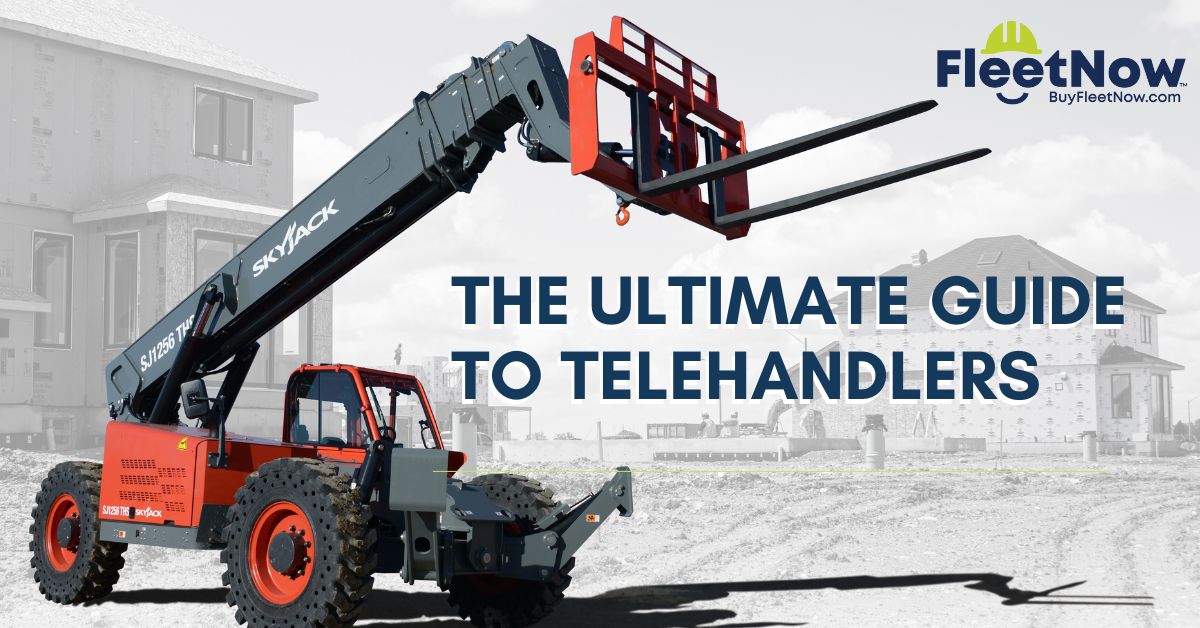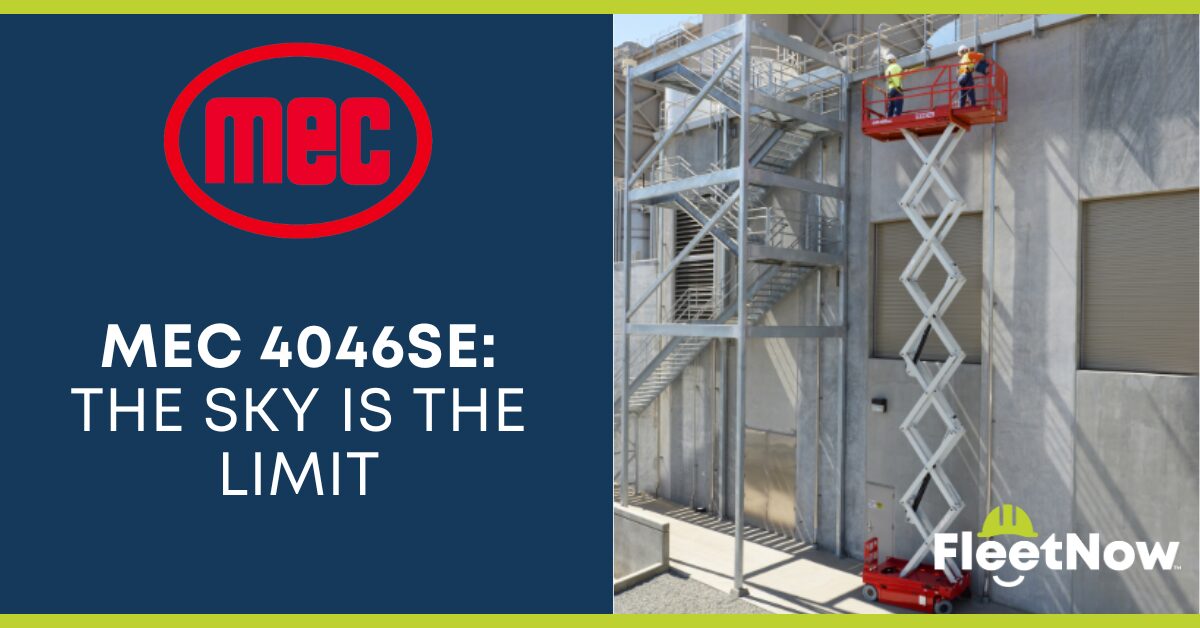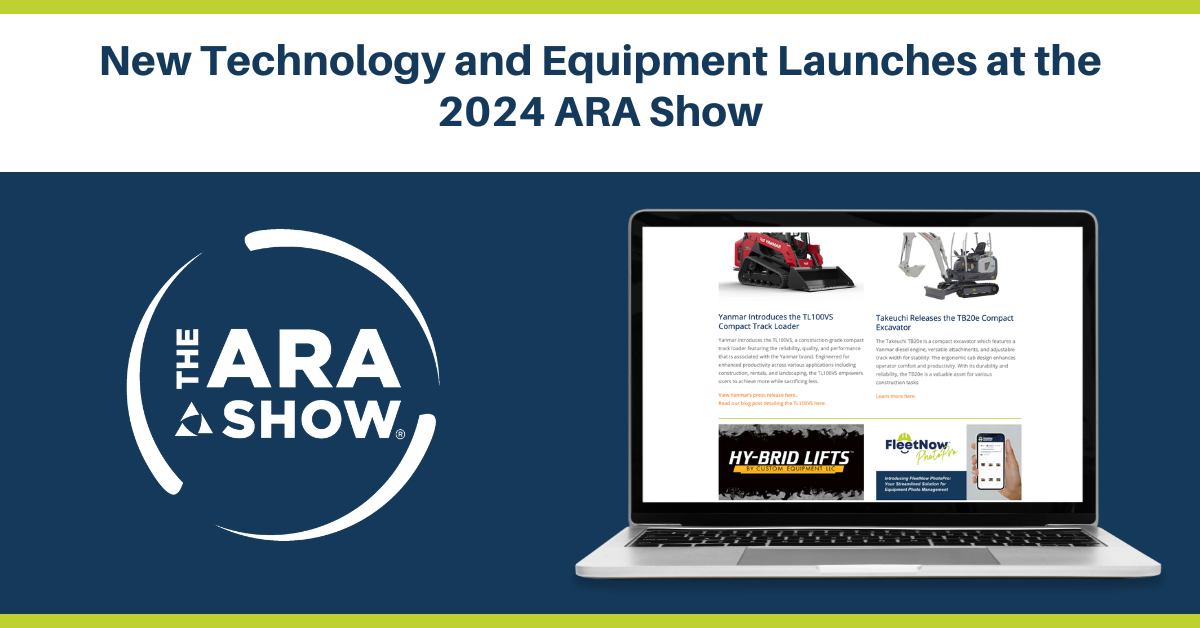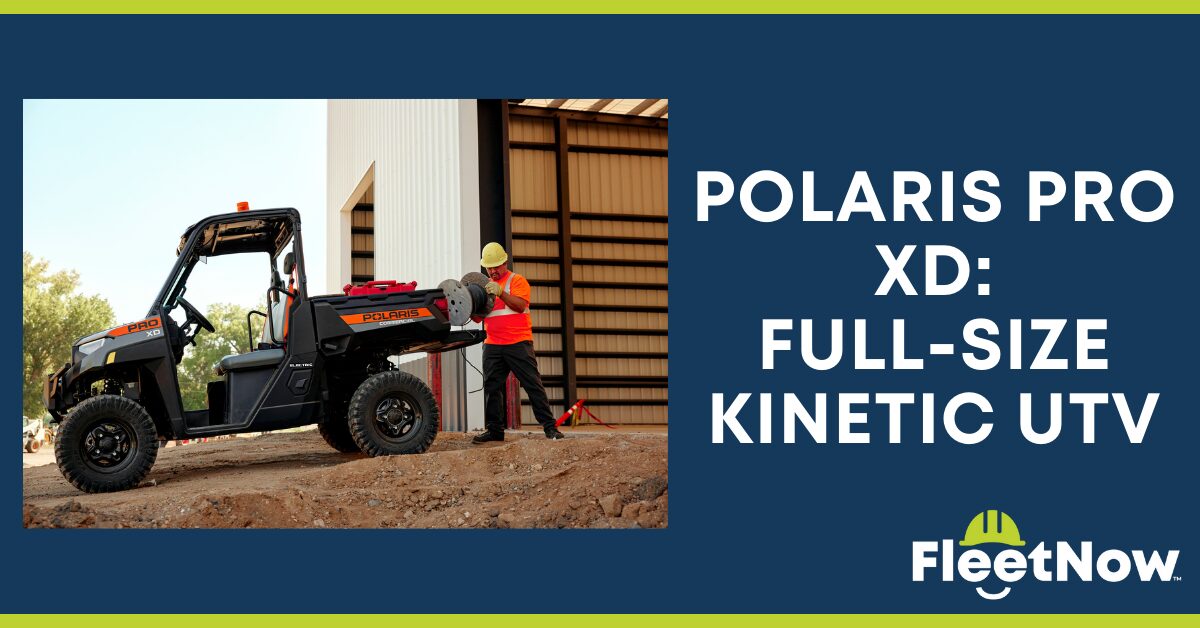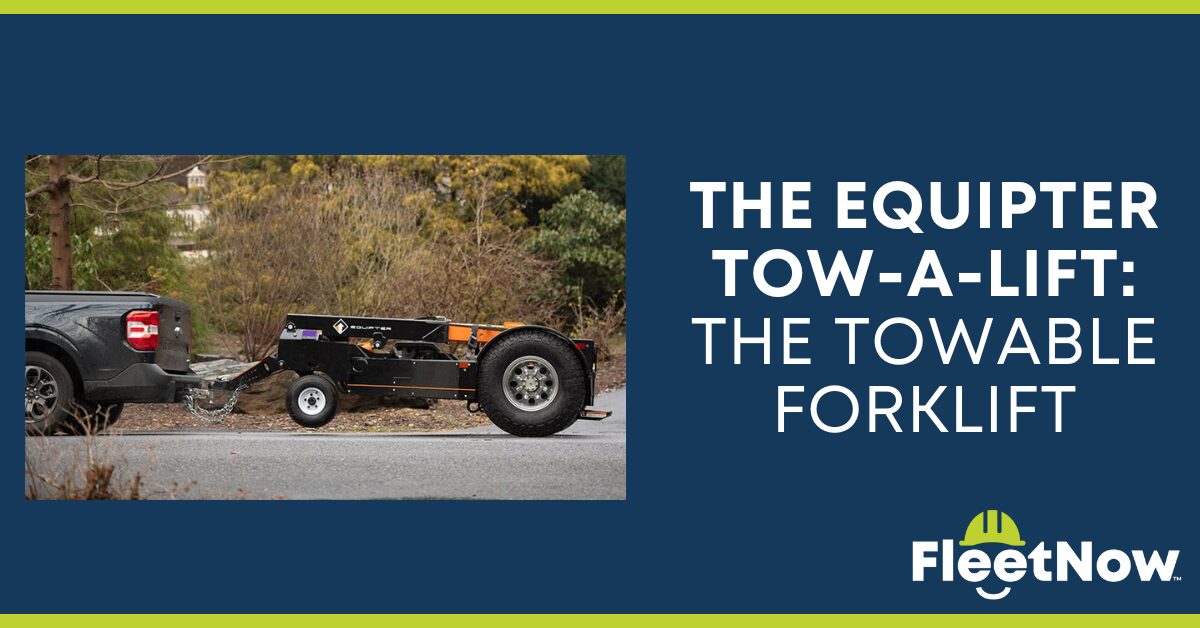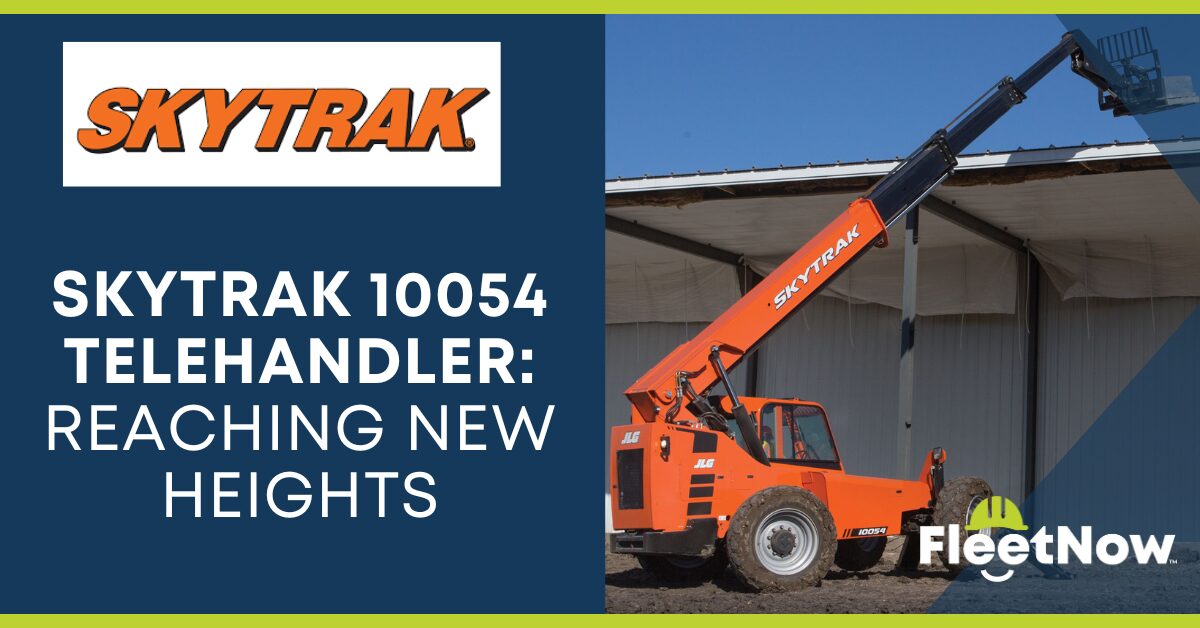If you are looking for a telehandler for sale, this ultimate guide to telehandlers can help you save time and money.
A telescopic handler, or telehandler, is a heavy-duty hybrid of a crane and a forklift. These hydraulic lifts are extremely useful and common in the agricultural sector for moving large hay bales. They also have hundreds of applications in manufacturing, shipping and construction sites. Here’s a handy at-a-glance guide that explains everything you’ve ever wanted to know about telehandlers.
Ultimate Guide To Telehandlers
What to Look for When Buying a Used Telehandler
A new telehandler in 2021 can run as high as $140,000, depending on the make, model and application. That’s why it is so attractive to try to find a used telehandler for a lower purchase price. Here are some things to inspect when buying a used telehandler:
Check the Mechanical Systems
This includes the engine, drive train, hydraulics, brakes and steering.
- Check the engine for leaks and check for signs of leakage on the ground beneath the machine. Inspect seals and gaskets for signs of wear.
- Check engine fluids to see if they need to be replaced.
- Test the steering and brakes, including the service brakes and parking brake.
- Check the hydraulics for leaks and note any strange sounds when testing hydraulics.
- Check usage on the hours meter and inspect the meter to make sure it hasn’t been tampered with or altered.
Check the Structural Systems
- Look over the boom, mast and frame of the used telehandler. Problems to check for include rust, cracks, bent metal or faulty welds.
- Inspect any fork attachments to make sure they’re the right size for the machine.
Review Maintenance
- Does the used telehandler have extensive and meticulous maintenance records? Look over all the documentation related to maintenance and servicing.
- Check the time between service dates to make sure the machine was well cared for.
Check General Appearance
- Look at the overall appearance of the telehandler for signs of wear and tear. This includes everything from the cab glass to the leather seat upholstery and anything else.
- Check the tires to make sure they’re still in good condition.
Make and Model Information
You might find a telehandler for sale that has a great price, only to discover that the model is no longer serviced by the manufacturer. An older telehandler can sometimes be difficult to find parts for, if it is no longer in service. The older a machine is, the less likely you will be able to find a service technician to make repairs.
How Much Does it Cost to Buy a Telehandler?
As of 2021, a new telehandler can cost between $70,000 to $140,000. The lift capacity of the machine is the main factor in determining the cost of a new telehandler. A telehandler with a lift capacity of 5,000 to 7,000 pounds can cost between $70,000 and $80,000; a telehandler with a lift capacity of 11,000 pounds or more can range from $125,000 to $140,000.
A used telehandler will likely sell for anywhere between $15,000 and $60,000. The price of a used telehandler is impacted by the number of hours of operation, condition of the machine and its lift capacity. Prices will obviously vary between different manufacturers.
How Many Hours Does a Telehandler Last?
It’s not uncommon for a telehandler to run at low RPMs for much of its lifespan, so these machines can be used for a lot of hours before they need an engine rebuild. If routine maintenance is carried out on schedule and the machine is used for normal operations, the engine can last up to 10,000 hours. In more harsh applications, where the telehandler is running 24 hours a day and taking a beating, the engine could last about 5,000 hours before needing a rebuild.
Is It Worth Buying a Telehandler?
This depends on how much a company plans to use the telehandler and some other factors. If you only need a telehandler during peak seasons — such as moving extra warehouse merchandise during the holidays — then it will probably be cheaper to rent a telehander for a few weeks out of the year.
Renting a telehandler does have a higher long-term cost than purchasing a telehander outright. Rental and leasing companies will also charge you a penalty for overuse, if you operate the telehandler for more hours than specified in the contract. You also have to consider that a rented or leased telehandler is not an asset that your company owns. When you buy a telehandler, you can use it as an asset to borrow against, or you have the option to resell it.
Buying a telehandler is a better option if you need it for long-term, year-round applications. Renting is the better option for short-term jobs or applications.
How Much Does it Cost to Rent a Telehandler?
If you plan to rent a telehandler, the daily cost of the machine will depend on its lifting capacity and how far the boom can reach. The price can also be impacted by any equipment insurance that is required by the rental company. Here are some average telehandler daily rental prices from 2020 to give you a sense of how the pricing works:
- 5,000 – 6,000 lbs. capacity, 19 – 36 ft. boom: $200 – $800
- 6,000 – 8,000 lbs. capacity, 42 ft. boom: $250 – $900
- 9,000 – 10,000 lbs. capacity, 42 – 45 ft. boom: $350 – $1,350
- 10,000 – 12,000 lbs. capacity, 55 ft. boom: $400 – $1,850
- 15,000 – 20,000 lbs. capacity, 44 ft. boom: $800 – $4,200
Telehandlers can be rented on a daily, weekly or monthly basis from most rental companies. The price per day is reduced when renting a machine for longer periods of time. Again, note that prices will vary between different rental companies and manufacturers of telehandlers.
Operate a Telehandler Safely
Any type of large construction equipment with moving parts, including a telehandler, can be dangerous to an untrained operator or other workers on your jobsite. The ANSI A92.24 requires all operators, supervisors and non-operator occupants of a telehandler must be trained in the proper use of the machinery, in order to avoid injury or death.
Here are some guidelines required for the safe operation of a telehandler:
- Inspect the work area before starting up a telehandler. This includes the ground where the telehandler will be moving around, and the space above and below the location where the lift will be operated.
- Wear the required Personal Protective Equipment (PPE). Any worker in a bucket lift must be equipped with a safety harness.
- Keep all tools secured while operating the telehandler.
- Don’t operate a telehandler while you are alone on a jobsite.
- Know the location of the emergency stop and lowering button and how to operate it safely.
- Do not use a scissor lift or any other type of telehandler lift until you are properly trained on it.
Choose the Right Telehandler for Your Job
There are a number of factors to think about before buying or renting a telehandler. You need to know whether you want a fixed or rotating telehandler, the load capacity and height that it can handle, and whether it needs to be used for multiple different kinds of jobs.
Fixed vs. Rotating
A fixed telehandler has a stationary cab and a telescoping boom lift. Fixed telehandlers are more mobile, and a better choice if you need to move materials a large distance across a jobsite.
On a rotating telehandler, both the cab and the boom lift can rotate up to 360 degrees. A rotating telehandler also has stabilizers that help prevent it from tipping over. Rotating telehandlers have extreme maneuverability within a confined space. They take up a lot less space on a job site, because they tend to be parked in one location for use.
Load Capacity and Height
Rental telehandlers come in different sizes based on load capacity and the height that the boom can lift materials:
- Super Compact: Similar to a forklift, but with much more versatility due to the variety of attachment types.
- Compact: Can reach approximately 30 feet and lift up to 8,000 pounds.
- Standard Telehandler: Height range of 18 to 32 feet with a heavier lifting capacity.
- High Lift: Can reach approximately 50 feet in height while lifting up to 8,000 pounds. Designed for those really hard-to-reach locations.
- High Load: 30-foot lift with an even heavier weight capacity.
Multi-Use Attachments
Telehandlers have a wide range of different attachments for the lift. This makes the machines extremely versatile. You might even need different types of attachments on a single job site:
- Buckets
- Elevated work platforms
- Truss booms
- Lift hooks
- Forks
- Pipe grapples
- Augurs
What Do People Use Telehandlers For?
The sky is the limit when it comes to the many uses for a telehandler. If you own a telehandler, here are some of many applications for this versatile piece of equipment:
Handling Materials
Moving heavy materials from Point A to Point B is the primary function of a telehandler. These machines are used on farms, on construction sites, in warehouses, and many other work sites for lifting and transporting heavy materials.
Elevated Positioning
If you need personnel to be positioned high above the ground, a telehandler‘s boom is a safe and efficient way to do it. Workers lifted on a telehandler can work on utility poles, paint buildings, clean walls and ceilings, or access hard-to-reach places on a jobsite without carrying all their tools and materials up a ladder.
Plowing Snow
Attach a snow bucket or plow to the front of a telehandler, and it can plow roads or a jobsite to keep production moving along, even during the winter months.
Sanitation Jobs
Telehandlers are extremely useful tools for sanitation and recycling centers. The attachments can be swapped out for different uses, such as buckets for packing waste materials, hooks for towing materials, blades for plowing, and much more.
How Do I Move a Telehandler to My Jobsite?
If you are renting a used telehandler, the rental company will typically deliver it to your jobsite. If you found a telehandler for sale and purchased it, you will likely have to transport it yourself, using either a flatbed trailer or a tractor truck. Here are some steps to follow when moving a telehandler to your jobsite:
- Weigh the telehandler and ensure that it is within the maximum capacity for the trailer or tractor truck. Make sure the length of the trailer is adequate as well.
- Drive the telehandler onto the trailer in reverse, with the forks pointed away from the cab of the transport vehicle. Center the vehicle on the trailer and chock the wheels, so it can’t roll during transport.
- For gas- or diesel-powered telehandlers, ensure that the fuel tank is secure and the cap is on firmly. For propane-operated machines, disconnect and remove the propane tank. If it’s an electric telehandler, ensure that the battery is fully charged before transport. Disconnect the battery terminal before transport as well.
- Secure the telehandler with chains and comealongs. You need at least four anchor points, one at each corner of the trailer, with two chains at each corner. Tighten the chains down securely with comealongs.
- Check height clearance for the telehandler and plan your transport route accordingly. Depending on the height of the telehandler under the cab of the tractor truck, you may need to avoid driving under bridges or overpasses.

